Chitkul, nestled in the beautiful Kinnaur Valley of Himachal Pradesh, has been one of the most beautiful villages I’ve ever visited in my life. The fabulous views of the Mountains all around, the truly adventurous roads that takes you to Kinnaur, amazing culture, Apple Gardens are a few reasons to visit this lovely village.
The trip to Spiti is incomplete without visiting Kinnaur Valley and Chitkul is a must visit destination in Kinnaur. Also everyone planning a Spiti trip from the Shimla side would first visit Kalpa then proceed to Chitkul then other destinations in Kinnaur and Spiti. Read more about my experience in Chitkul and Kalpa here.

About
Chitkul, nestled in the majestic Himalayas of Himachal Pradesh, is a picturesque village that exudes tranquility and charm. It’s allure lies not only in its natural beauty but also in its rich cultural heritage, as it is home to ancient temples and monasteries that speak volumes about the region’s spiritual significance.
Last Village of India
I was pretty excited for this journey because, Chitkul is a unique travel destination for many reasons. It is the last inhabited village before the Indo-China border, almost 60 kms away from the border. After Nagasti Post and Dumti village, there is the India-China border. The views in Nagasti is extremely beautiful, but civilians are allowed only till Chitkul due to security concerns and landslides.
Cleanest Air Quality
It is mentioned that Chitkul has the cleanest air quality in India in a study by IIT Delhi, which is 30 times better than the air in New Delhi. We were lucky to witness the village with cleanest air quality along with the dirtiest too at the end of our trip. Even the tradition of Kinnaur Valley can be evidently seen in this village.
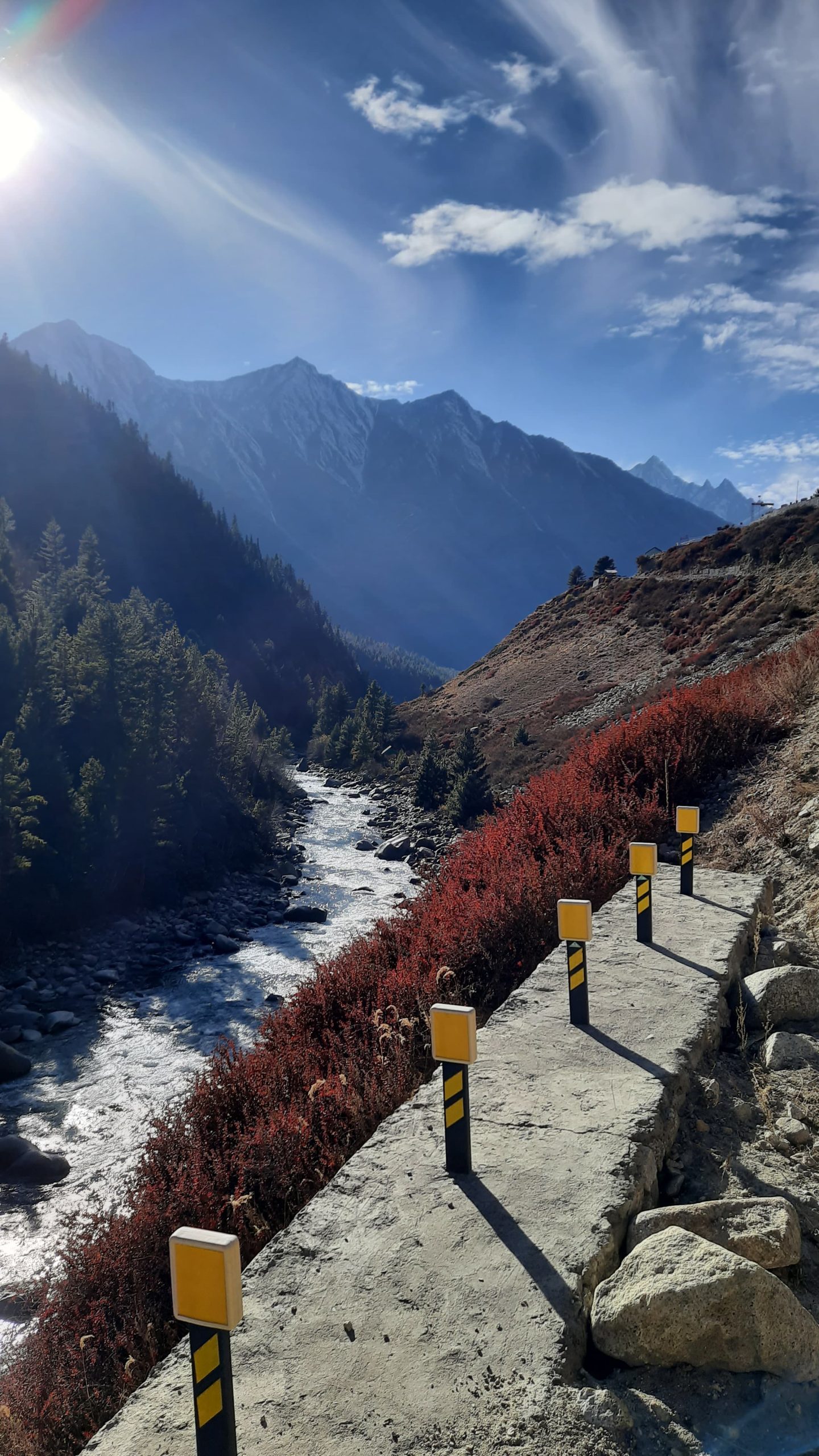
Visitors to Chitkul are treated to an authentic Himalayan experience, with opportunities for trekking amidst lush forests, exploring quaint villages, and immersing themselves in the local way of life. With its serene ambiance and awe-inspiring vistas, it is truly a heaven for those seeking solace amidst the grandeur of the Himalayas.
Location
Located on the eastern side of the Himachal Pradesh, Chitkul is just 24 kms from Sangla and 64 kms from Reckong Peo, the HQ of Kinnaur Valley and largest city as well. Shimla is 235 kms from Chitkul and the road connecting Shimla to Kinnaur Valley is popularly known as Hindustan-Tibet Highway as the British used this road to commute between India and Tibet from Shipki La Pass which is the current Indo-China Border controlled by Indian Armed Forces. Hence this highway is maintained by the Border Roads Organization.

As the road passes through rocky mountains it is highly prone to landslides and as there is no alternate connectivity from Shimla to Kinnaur Valley except the long route from Kaza, when the road is blocked for several days it becomes a serious trouble to the local people and tourists.
How to Reach
Train
The nearest Railway Station is Shimla which lies on the Kalka-Shimla line. This is a narrow gauge line starting from Kalka. Once you reach Shimla, you can take a HRTC or Private Bus to reach Chitkul/Sangla or even reach Reckong Peo then come to Chitkul. Even private taxis can be hired.
Air
The nearest airport is Shimla Airport 22 kms from the city. Only Alliance Air operates ATRs here. Other major airports are Chandigarh or Delhi too. Once you reach Shimla by road one can reach Chitkul.
Road
Road Condition
Once you reach Shimla the only way to reach Chitkul is by road. The distance is 235 kms and the journey is filled with a lot of adventure as the roads after Narkanda are very narrow and the views are fabulous. This road is popularly known as Hindustan Tibet Highway and most of the parts are done by the method of Half Tunneling which is rarely seen in other parts of India. Private taxis are available in Shimla and also many rental bike providers are available in Shimla city.
One has to take Shimla road from Reckong Peo till Karchham Bridge and take the left diversion crossing the bridge which takes you to Sangla Valley, Rakchham and Chitkul, which is the last inhabited place in this area. This Hydroelectric Power Station just after crossing the bridge is a very important project for Kinnaur Valley.
Once you cross the Karchham Hydroelectric power point then welcome to the most deadly and dangerous roads of Kinnaur Valley. This entire stretch of 40km is near to hell. The road in this section is extremely narrow and you’ll be climbing up and within no time climbing down as well. Reckong Peo is at a height of 7,500 ft but Chitkul is at a height of 11,319 ft.
Buses, Military Vehicles, private taxis, localites keep moving through this road, as it is very narrow, one has to anchor at a point and give pass to the opposite vehicles. One side is the mountain and the other side is a deep ravine which makes this journey very dangerous. Once again you frequently get to see Half Tunneling, which is a special occurrence in Kinnaur Valley only.
After 17 kms you reach Sangla, which is another major tourist attraction in Kinnaur. Every vehicle heading towards Chitkul has to pass through this village. Once you cross this place, you barely find vehicles moving around and mostly you’ll be alone for the entire stretch. The next 32 kms is very harsh, narrow passes, broken roads but the scenic views of Baspa River and the mountains are fabulous. You cross the villages Batseri, Rakchham and finally reach Chitkul. This road might be closed sometimes due to landslides and snowfall. Make sure you check the updates before you go ahead.

HRTC Bus Service
HRTC buses ply between Shimla to Reckong Peo, which is the HQ of Kinnaur Valley and Chitkul is 62 kms from here. Few direct buses do go to Sangla from Shimla(Check HRTC Timings here). There is a bus mentioned in the schedule from Mandi to Chitkul via Shimla, make sure you enquire about the recent changes in the service. So it’s recommended to reach Reckong Peo, then come back to Chitkul.
Reckong Peo is well connected by direct buses from Delhi, Haridwar, Chandigarh and other important places of HP. All the buses which run in Spiti are actually operated by Reckong Peo depot. Once you reach Reckong Peo, there are multiple bus services to Sangla Valley and even directly to Chitkul.
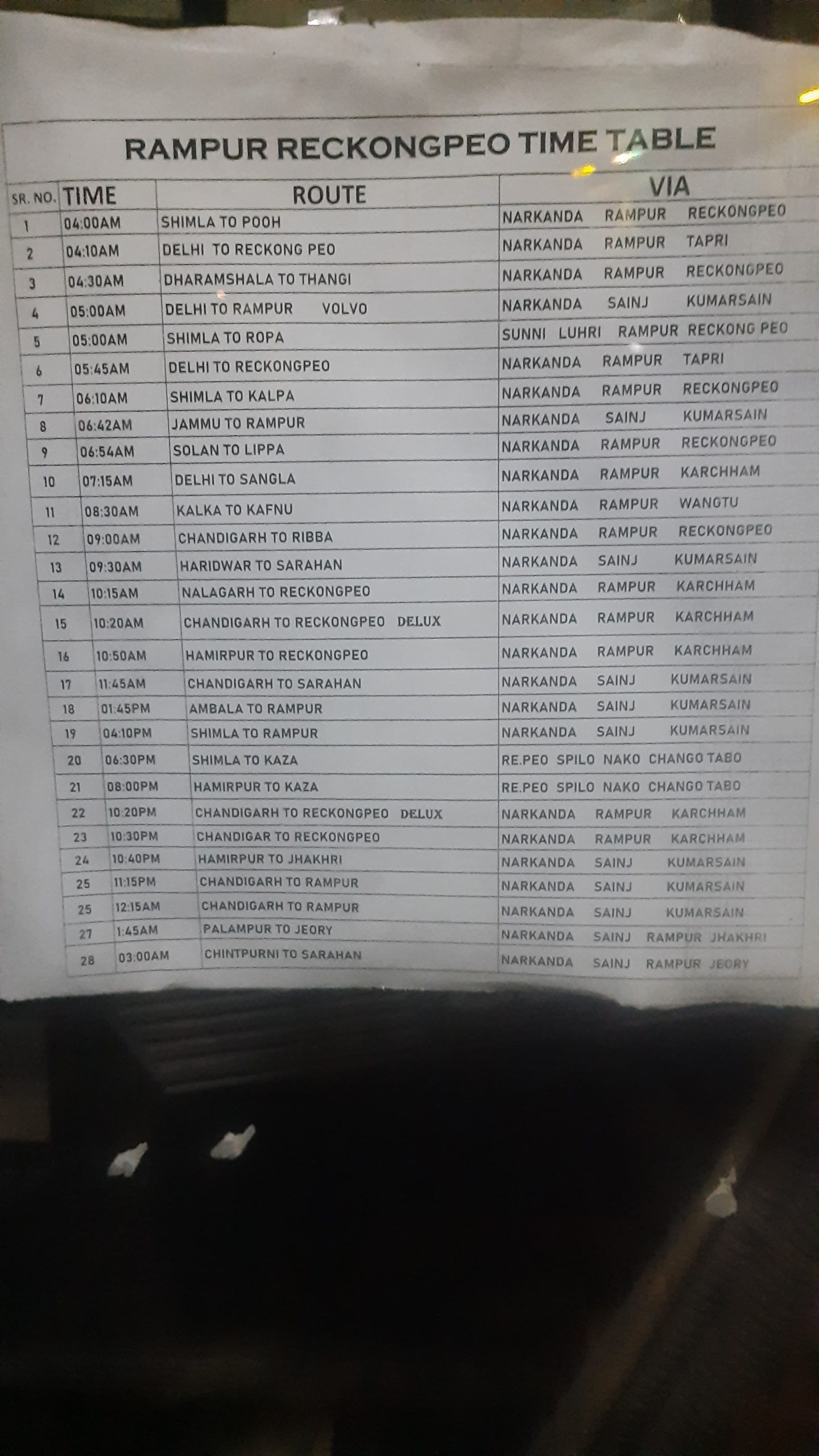
Reckong Peo Bus Timetable – link
Chitkul Bus Timetable – Link
Local Commute
Once you reach Reckong Peo, there HRTC buses and local buses ply to Chitkul. Private taxis can also be hired from Reckong Peo. There are no private taxis available in Chitkul, so better to take two way taxi from Shimla or Reckong Peo.
Weather
Due to the proximity towards the Himalayas, this village at a height of 11,319 ft usually experiences a very cold climate. The winters in the months of December, January, February and March receive heavy snowfall and even in other months the snow capped mountains can be easily spotted. The road to Chitkul is completely blocked during this period.
Due to a short distance from Shimla, this is a popular destination to witness snowfall in Himachal Pradesh. The best time to visit would be from September to December as the weather is not too cold and it is the Apple season in Spiti. Don’t forget to taste juicy, fresh apples during this weather.
Culture
The people of Chitkul primarily belong to the Kinnauri tribe, who have their distinct cultural practices and traditions. The traditional attire of Kinnauris includes colorful woolen shawls, caps, and jewelry adorned with semi-precious stones.
The religious practices in Chitkul are predominantly influenced by both Hinduism and Buddhism. The village is dotted with ancient temples and monasteries, where locals gather to offer prayers and perform rituals. The Nyingmapa Buddhist monastery and Matha Devi Temple, located in Chitkul, is particularly significant, attracting devotees and visitors alike.
Overall, the culture and traditions of Chitkul reflect a harmonious blend of spirituality, nature worship, and community-centric values, making it a fascinating destination for cultural exploration in the Himalayan region.
Accommodation & Food
Though the overall size and population of the village is very small, there are enough homestays and hotels available. There isn’t any option to stay in the monastery as such but private options are available. Few options are available online but most of them aren’t listed there, so one can call and reserve or book online as during peak seasons the hotels are always full. We stayed in a hostel, The Himalayan Tribe just to bus stand which was economical and well maintained as well.
The Himalayan Tribe – 8988111145
There are many riverside tent stays available near the Baspa river and that would be another great option to stay.
The Famous Dhaba & Love Aaj Kal Movie
Most of the hotels have restaurants attached and mostly North Indian and even in few hotels South Indian food is available. Chinese food is easily available in small stalls as locals usually prefer the same. Food won’t be a problem during your stay here. The most famous one is the Hindustan Ki Akrhi Dhaba right in front of the bus stand and central area.
The famous movie Love Aaj Kal by Imtiyaz Ali was shot here. The song Mehrama was shot in various parts of Chitkul and one can see the pictures of many actors’ pics like Karthik Aaryan, Sara Ali Khan in the Dhaba.
Things To Do
Baspa River
As Chitkul is a very small and remote village, there aren’t many such places to visit as such, but enjoying the beauty around is the best part about here. The lovely Baspa river flows down the village and the views around it are magnificent. Just spending time next to river in pin drop silence, only with the sound of gushing water is a very cool experience.
The best part of the rivers flowing in the Himalayas is that the water is formed by melting glaciers, so it would be damn cold and also the color would be too different. Also due to the unique stones all around, the water appears crystal clear and looks so beautiful.

The views around the village are so beautiful. We witnessed snowcapped mountains during our visit and during peak winters, entire village would be covered with thick snow blanket. Just move out a few kilometers out of the village to have a look of the entire village and the river with mountains all around.
Water Flouring Machine
Another unique thing found only in Chitkul is the Water run flouring machines called Gharats. There are 7 such machines here and people use them for their daily needs which are located right above the place where water flows. Though the technology is so advanced and everyone uses motors for this purpose, Chitkul still follows this tradition.
Trekking
One more iconic thing about Chitkul is the lovely treks. The Lamkhaga Pass and Bhorasu Pass trek actually starts from Chitkul Village and takes you upto to Gangotri Glacier. You start from Himachal Pradesh and end up in Uttarakhand. Also with this trek route, there are also many other treks which you can continue to, or even start from Uttarakhand side and end up in Chitkul.
Ideal Plan to visit Chitkul
The Ideal trip to Kinnaur Valley can be planned for 3 to 7 days as per your timings. After Kalpa one can straight away head towards Chitkul, lovely village in Kinnaur Valley and later to Sangla Valley and Rakcham on the way to Chitkul itself. The trip can be further extended to Spiti Valley which would need much more time as the journey itself takes a day.
Nako is another beautiful village on the way to Kaza in Spiti Valley. After Nako the Spiti Valley starts from Sumdo. This can also be added in the plan but it extends the length of the trip.
The ideal trip to Spiti actually starts from Shimla exploring Kinnaur Valley and later heading towards Kaza then to Manali completing an entire circuit which we even did. This requires a minimum of 8 days, but trust me this is the best trip I have ever taken.
Chitkul can also be reached from Manali but the journey would start from Atal Tunnel-Kunzum Pass-Kaza-Tabo-Nako which completes your entire Spiti trip as the major tourist attractions in Spiti are close to Kaza which is the HQ of Spiti Valley. This is a very long and tedious journey and traveling at night isn’t recommended, thus taking the entire 2 days.
Things to keep in mind
- Winters are extremely cold and even the average temperature itself is lesser, don’t forget to carry winter clothing.
- Landslides are common in Hindustan Tibet highway, check the road status before you plan your trip. We reached Reckong Peo from Haridwar in a HRTC bus and the next day the bus wasn’t operated due to the landslide, we were lucky to reach the previous day. The block continued for a few days and luckily we planned to explore Spiti through Kaza and we escaped without trouble.
- Karchham-Chitkul road is very narrow and challenging, make sure you are well experienced to drive in such roads. Also check the road status before you start the journey as they’re closed sometimes due to landslides and snowfall.
- Petrol Pumps are easily available in every town on the way from Shimla to Reckong Peo, even there’s an Indian Oil outlet in Peo. But once you cross Reckong Peo the next fuel outlet is available in Kaza itself, make sure you plan your trip accordingly.
- The Jio network in Chitkul is pretty good and internet speed is good as well. The day I had went there, the tower was under maintenance, or else network shouldn’t be an issue.
- ATMs are available in Reckong Peo
Conclusion
Trust me, Chitkul is way more beautiful than you can ever think of. You’d never regret visiting such a fabulous place. Do drop any questions or information you’d need to know about planning your trip to Spiti Valley and also your experience of visiting Chitkul and Kinnaur Valley.
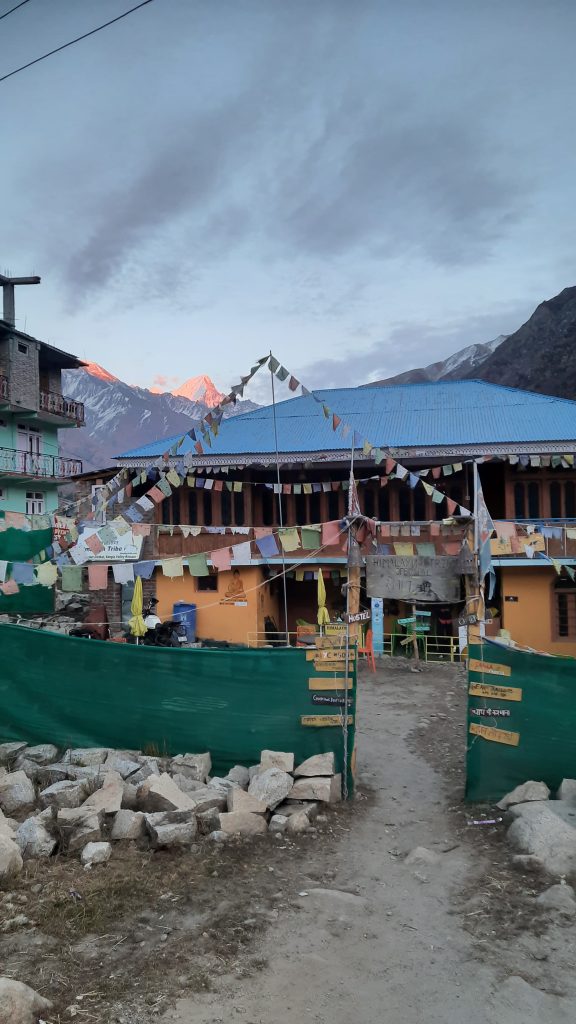


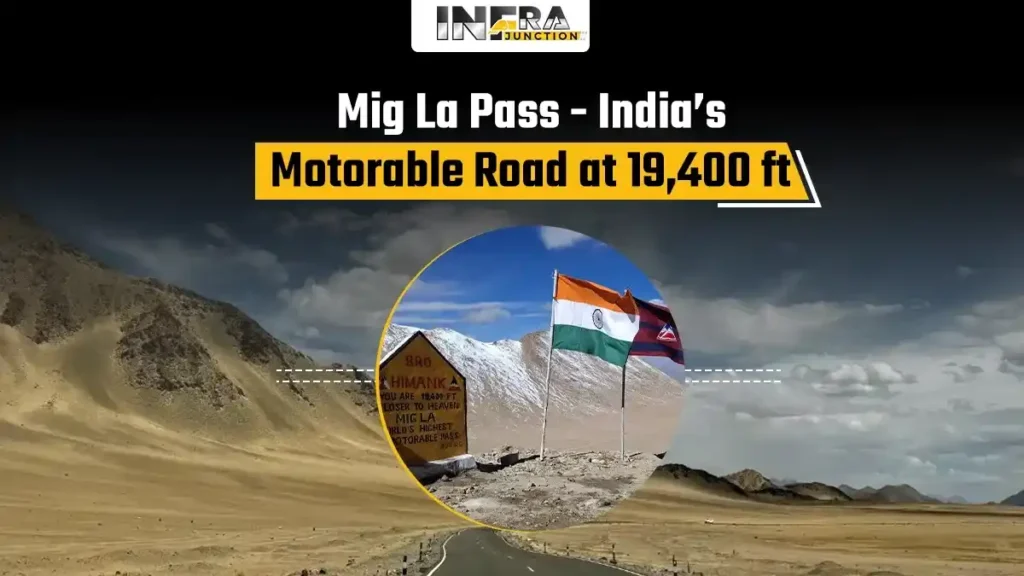
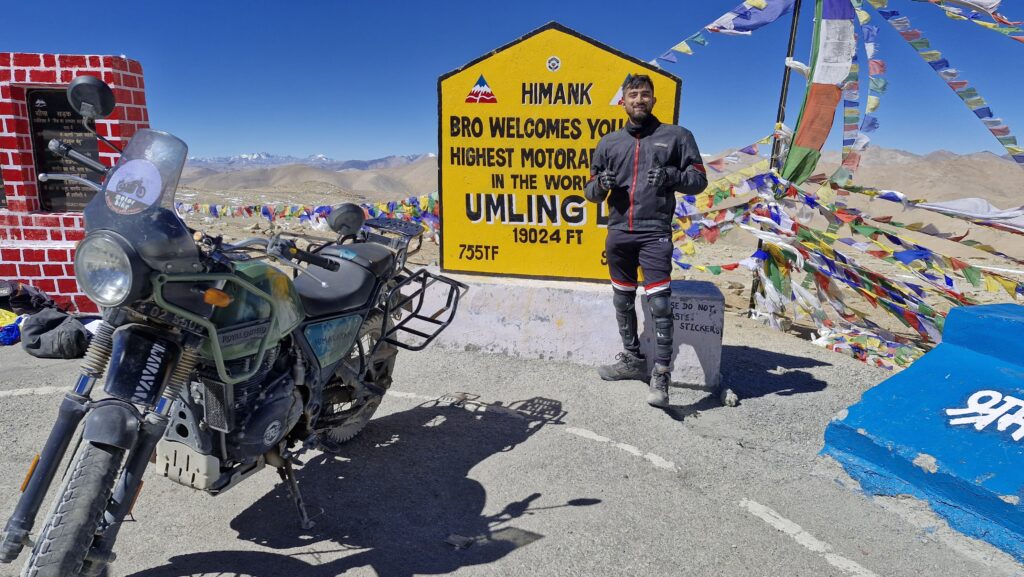
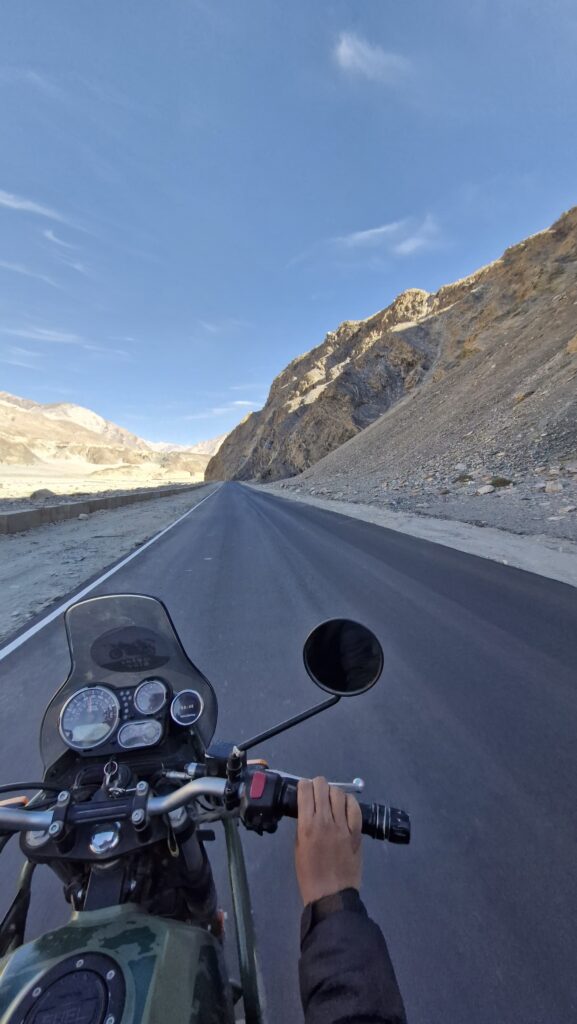
Your blog is a treasure trove of valuable insights and thought-provoking commentary. Your dedication to your craft is evident in every word you write. Keep up the fantastic work!
What a comprehensive and insightful travel guide to Chitkul, Kinnaur, and Spiti! Your detailed information and beautiful photos make it easier for travelers to plan their trips. For those looking to explore more of Kinnaur and beyond, check out Kinnaur Tours for excellent travel packages and advice. Thank you for sharing such valuable content!